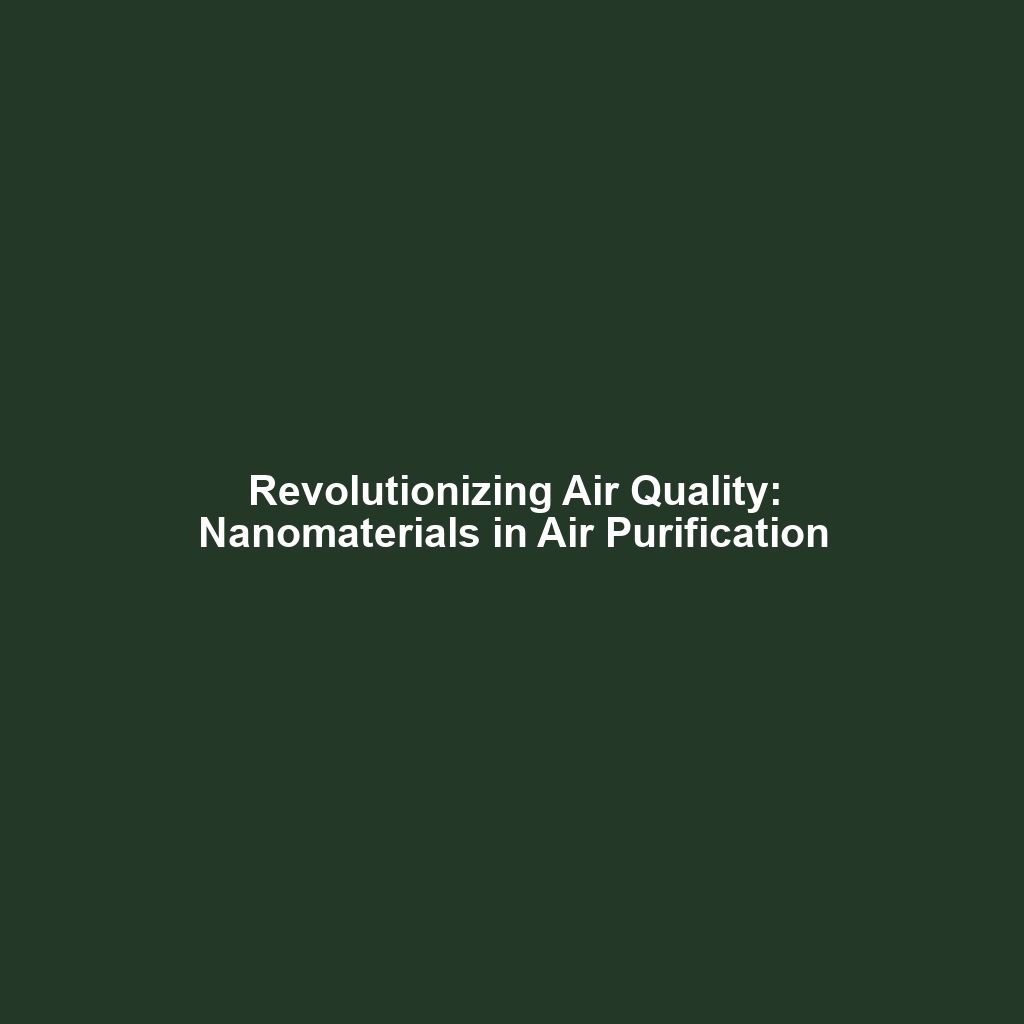Nanocatalysts in Air Filters: Breaking Down NOx and VOCs
Introduction
Nanocatalysts have emerged as pivotal agents in air filtration technology, effectively breaking down harmful gases such as nitrogen oxides (NOx) and volatile organic compounds (VOCs). These nanomaterials, categorized as Advanced Nanomaterials, are engineered at the nanoscale to enhance catalysis processes, thereby contributing significantly to air quality improvement. Their ability to facilitate reactions that eliminate pollutants is invaluable in combating environmental challenges, making the study and application of nanocatalysts critical in the push for sustainable technologies.
Key Concepts
Understanding Nanocatalysts
Nanocatalysts are materials that possess a high surface area-to-volume ratio, which is essential for catalytic activities. By leveraging these properties, they can effectively accelerate chemical reactions that break down harmful gases like NOx and VOCs into less harmful substances.
Role in Advanced Nanomaterials
As a part of the Advanced Nanomaterials category, nanocatalysts play a crucial role in advanced environmental remediation technologies. They exemplify how nanotechnology can be harnessed to address air pollution by facilitating efficient catalytic processes that degrade pollutants.
Applications and Real-World Uses
The applications of nanocatalysts in air filters are becoming increasingly significant:
- Automotive Industry: Nanocatalysts are incorporated into catalytic converters to reduce NOx emissions from vehicle exhaust.
- Industrial Air Purification: Facilities utilize nanocatalytic materials in air filtration systems to minimize emissions of VOCs during manufacturing processes.
- Indoor Air Quality Solutions: Residential air purifiers are being developed with nanocatalysts that break down indoor pollutants, thus improving air quality.
These examples illustrate how nanocatalysts are used in air filters to address environmental pollution, showcasing the vital role of Advanced Nanomaterials in various sectors.
Current Challenges
Despite the promise shown by nanocatalysts, certain challenges persist in their application:
- Scalability: Producing nanocatalysts in commercially viable quantities remains a challenge.
- Stability: Many nanocatalysts suffer from deactivation over time, leading to reduced effectiveness.
- Cost: The production and integration cost of nanocatalysts can be prohibitive for widespread use.
These challenges of nanocatalysts need addressing to fully leverage their potential in air filtration technologies.
Future Research and Innovations
Emerging research into nanocatalysts promises to enhance their performance and applicability:
- Next-Generation Materials: Development of hybrid nanocatalysts that combine different nanomaterials for improved performance.
- Enhanced Reactivity: Innovations aimed at increasing the catalytic activity of existing nanocatalysts.
- Smart Filter Technologies: Integration of nanocatalysts with sensor technologies to monitor and optimize air purification processes in real time.
Such innovations indicate a bright future for the role of nanocatalysts in combatting air pollution through Advanced Nanomaterials.
Conclusion
In summary, nanocatalysts used in air filters present a promising avenue to break down harmful gases like NOx and VOCs, which is increasingly significant in our fight against air pollution. The continuous advancement of Advanced Nanomaterials can lead to innovative solutions that improve air quality. As researchers work to overcome current challenges, it is crucial to keep abreast of these developments. To learn more about other advanced materials in environmental applications, visit our related topics on environmental technology.

